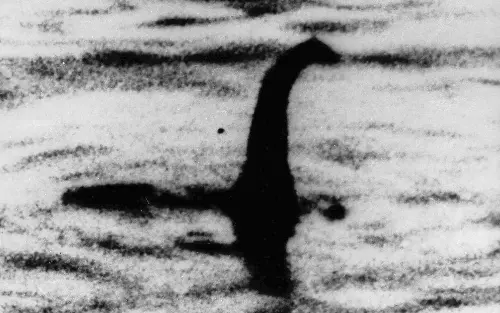
The Loch Ness monster has forever remained elusive – but now one of Britain’s leading universities has found that the best time to spot the mysterious creature is on a sunny summer’s day.
A study by the University of St Andrews used a database of “Nessie” sighting reports to translate anecdotes about the creature into data and identify patterns of when it seemingly appeared.
Researchers found sightings of the monster spike during the summer months when weather conditions were “excellent”, with the most taking place during August around midday.
The number of people claiming to have spotted it significantly dipped during the winter months, in the evenings and at lunchtimes.
In addition, the vast majority of sightings took place when weather conditions were calm and still, with no wind or very light winds.
The researchers also found second-hand reports of sightings tended to be exaggerated, with the monster being closer and larger compared with accounts given by people who had claimed to have seen it themselves.
A team from the university’s Centre for Research into Ecological and Environmental Modelling collaborated with Adrian Shine, of the Loch Ness Project in Drumnadrochit, for the study.
They analysed 1,433 alleged “Nessie” encounters from 1850 onwards, including 641 first-hand reports, with their findings published in the Journal of Statistics and Data Science Education.
The average duration of the encounters was “surprisingly long” at four-and-a-half minutes suggesting that the monster is not “contrary perhaps to popular belief, generated by misperception or misinterpretation caused by a brief glimpse of an object”.
While the researchers admitted that their study did not prove the monster’s existence, they said it highlights the power of statistical thinking in evaluating anecdotal evidence.
Dr Charles Paxton, of St Andrews, said: “We cannot reach conclusions about Loch Ness monsters from these collected accounts, but we can draw insights about the wider population of Loch Ness monster reports.
“Nessies are mainly reported in the summer months, during the day as opposed to the night – with a dip at lunchtimes – and under excellent weather conditions.”
‘Distorted in retelling’
Referring to the conclusion that second-hand reports tended to be exaggerated, he said: “These patterns might be generated by the monsters themselves, but more likely reflect the availability of witnesses and the tendency for stories to be distorted in retelling.”
The first recorded sighting of the monster came in the 6th century, with an account of a Loch Ness water beast in a biography of St Columba, the Catholic missionary.
It was spotted again in the 12th-century by Walter of Bingham, a minor English cleric, who drew a picture of a bear-like sea creature with fire coming from its eyes.
There were then several sightings in the 1930s, which were covered relentlessly by newspapers, with interest becoming global.
The most famous image of the monster, showing a serpentine head and neck emerging from the water, was published in 1934, although it is now generally agreed that it was an elaborate hoax.
Earlier this week the first potential Loch Ness Monster sighting of 2025 was reported, with images showing a “black mass” under the water. It appeared for several minutes in “absolutely perfect conditions” at the loch’s Dores Beach.